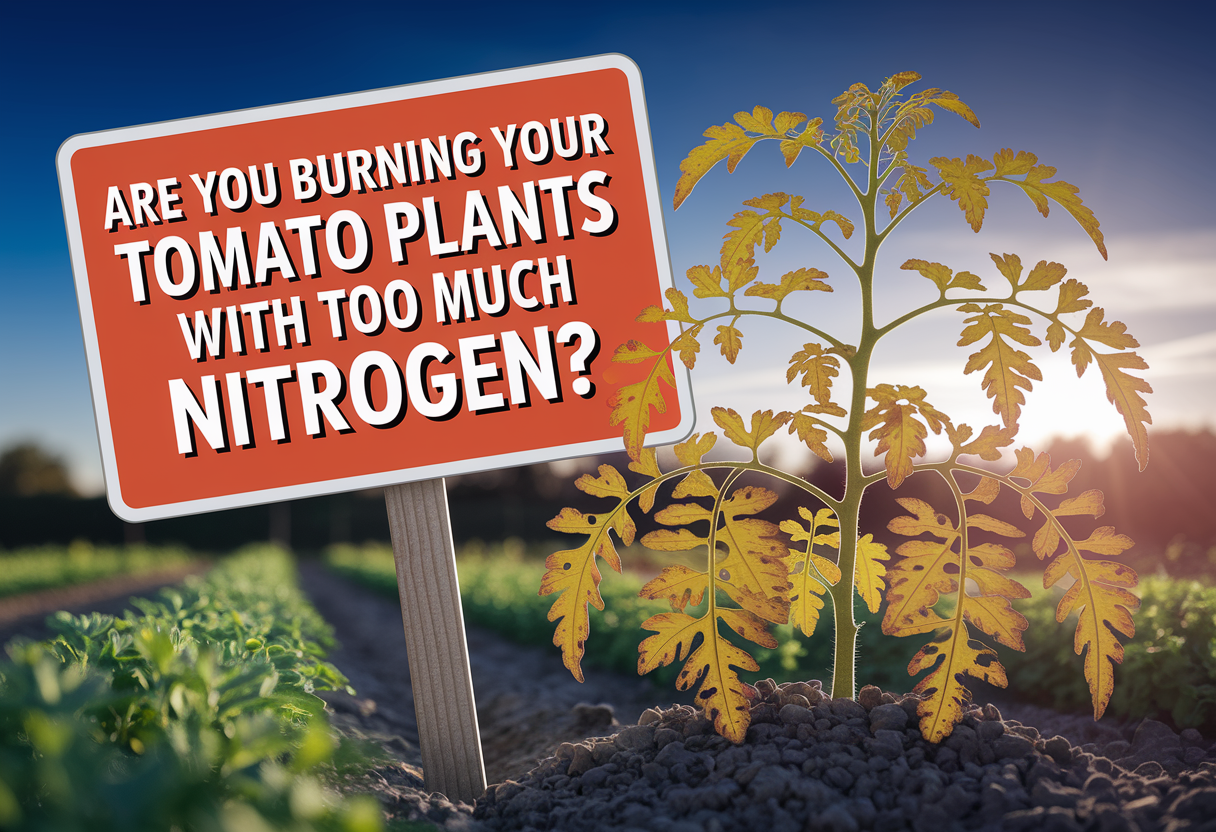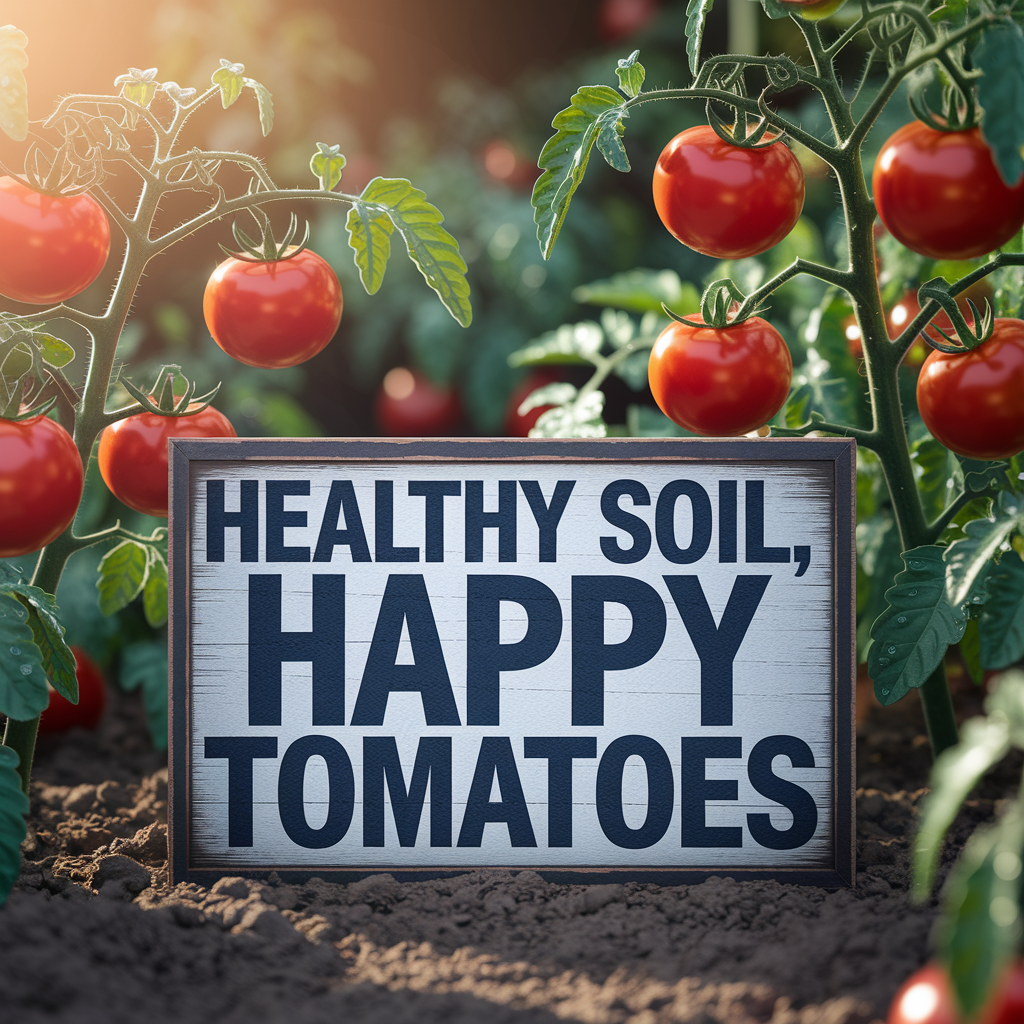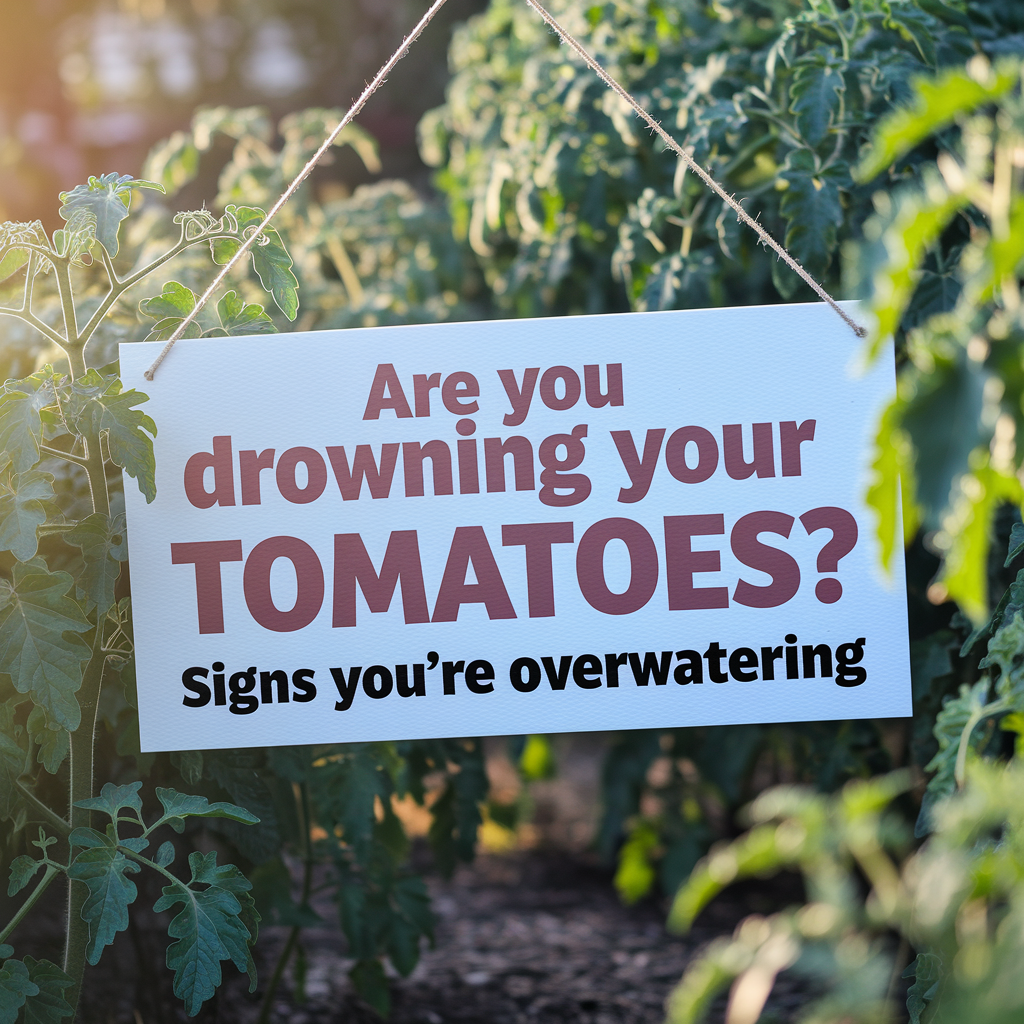
How Do You Know If You’re Overwatering Tomato Plants?
When I first got into growing tomatoes, I thought more water meant happier plants. But within days, my thriving green beauties started looking… sad. Droopy leaves, pale stems, and slow growth had me thinking I was underwatering. Nope — I was drowning them.
The most obvious signs of overwatering tomato plants are soft, curling leaves that feel limp to the touch. They might even turn yellow or get dark spots that look like bruises. And the kicker? Your soil stays soggy days after you water. That’s not good.
If you’re seeing these early signs, back off the hose. Let the soil dry out a bit before watering again. A moisture meter can help — or just stick your finger two inches into the soil. If it still feels wet, skip watering.
Oh, and if you’re noticing yellowing alongside these symptoms, check out what might actually be turning your tomato plants yellow — it might not just be the water!
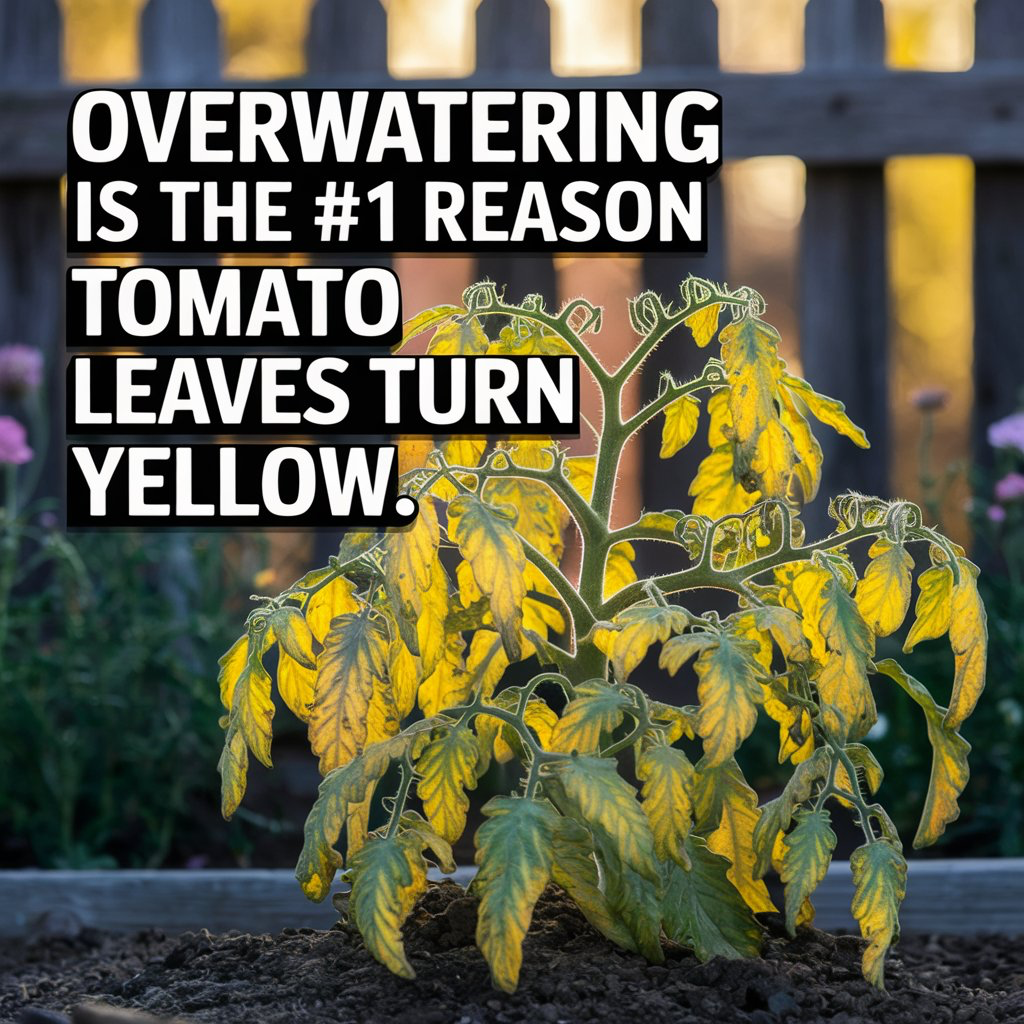
What Does an Overwatered Tomato Plant Actually Look Like?
This was a game-changer for me once I finally saw the difference. An overwatered tomato plant can trick you — the leaves may look wilted, but they’re actually waterlogged, not thirsty.
Here’s what mine looked like:
- Leaves curling downward like they’re sulking.
- Yellowing from the bottom up.
- Mushy stems near the base.
- Soil that smells a little funky from lack of oxygen.
And don’t confuse this with heat stress. If it’s been a cooler week and your tomatoes are still flopping over, you’re probably watering too often or too heavily.
I talk more about my early mistakes in this beginner-friendly tomato growing story — trust me, you’re not alone if you’re just figuring this out!

Can Tomato Plants Recover from Overwatering?
Thankfully, yes — most of the time. I’ve brought several back from the brink after realizing I was soaking them like they were in a rice paddy. But the sooner you catch it, the better your chances.
What I did was super simple: I stopped watering for a few days and let the soil dry out naturally. I also made sure my pots had good drainage (a few didn’t — big mistake). If your plant is in the ground, gently loosen the soil around it to help air get in. That helps the roots breathe again.
You can also prune off the yellowed or mushy leaves. That not only improves airflow, but it gives your plant a little relief — less foliage to maintain while it bounces back. Just don’t go crazy cutting things off.
If you’re not sure whether the damage is from water or something else, it could be helpful to check out this page of frequently asked tomato growing questions. I’ve added the most common problems there with some plain-English answers.
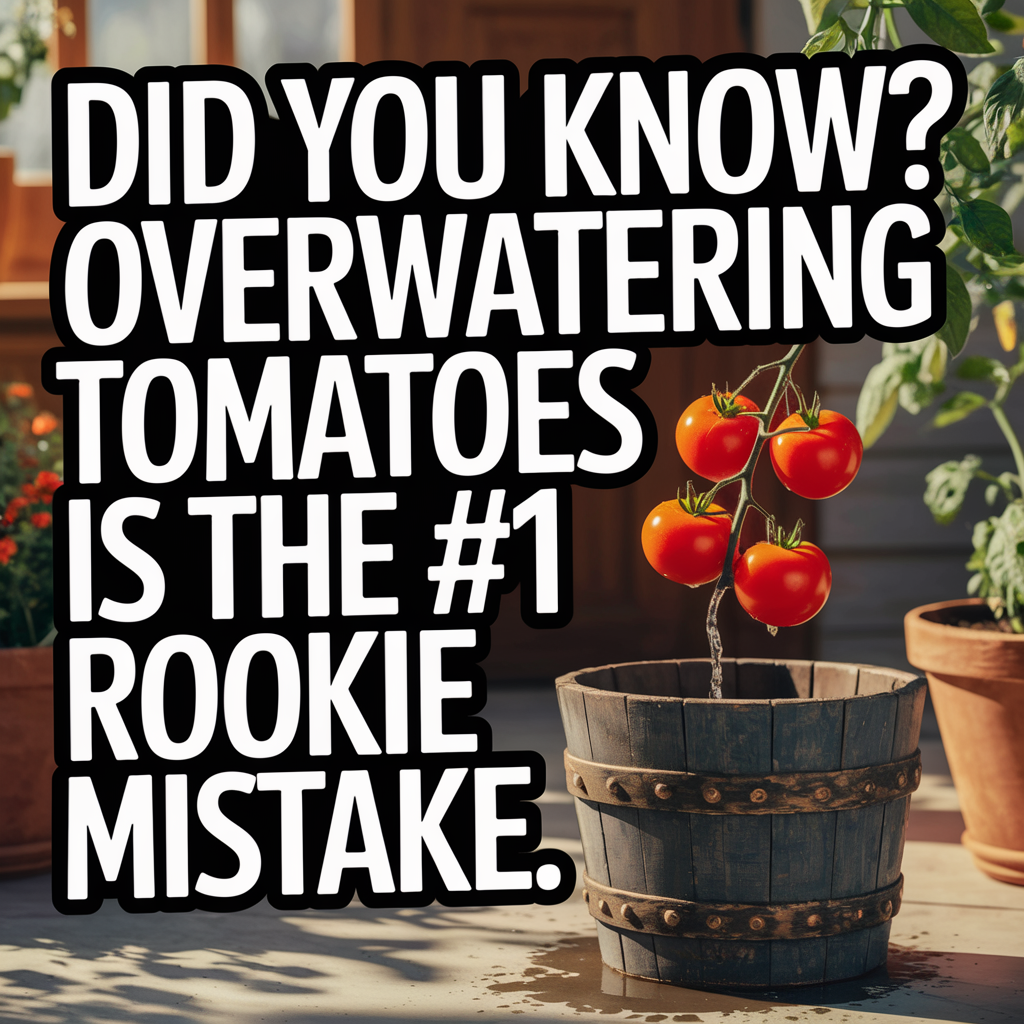
What’s the Best Way to Water Tomato Plants the Right Way?
This was probably the most important shift I made once I realized I was doing it all wrong. The key is consistency — and less is usually more.
I now water my tomatoes deeply about twice a week instead of giving them a little splash every day. This encourages the roots to grow deeper instead of staying shallow near the surface. If the weather’s crazy hot, I might add an extra round, but I always check the soil first.
And here’s something I didn’t know at first: water at the base of the plant, not on the leaves. Wet leaves = higher risk of disease. I use a slow, steady stream right near the stem — and if you want to level it up, a drip system or soaker hose is amazing.
Also, make sure your tomato beds or containers drain well. Standing water is your enemy. Trust me, once you get the watering rhythm down, everything else becomes way easier.
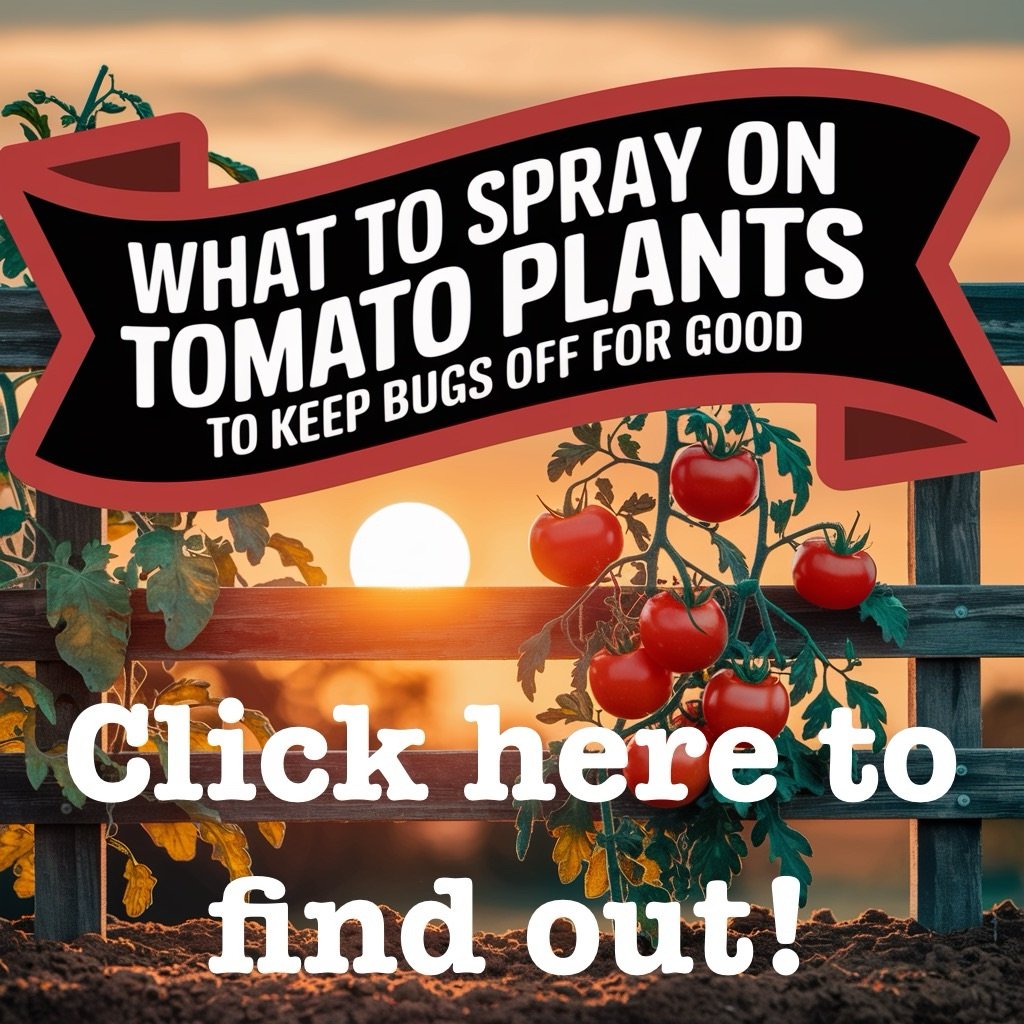
Can Overwatering Look Like a Nutrient Deficiency?
Oh yeah — and it totally confused me the first time it happened. Yellowing leaves? Wilting? I thought for sure my plants needed more fertilizer. So I gave them some… and that only made things worse.
What was actually happening? The roots were drowning and couldn’t absorb the nutrients already in the soil. Overwatering flushes out essential minerals like nitrogen, calcium, and magnesium. So even if your soil is rich, the plant can’t access it.
This is why I always recommend checking your watering habits before dumping more fertilizer into the mix. If the soil is soggy and your leaves are looking pale or curling, water may be the real issue — not lack of nutrients.
And if you’re curious about what fertilizer actually works (especially once your plant is on the rebound), I really like using this tomato booster I tested myself. But timing is everything — fix the watering problem first.
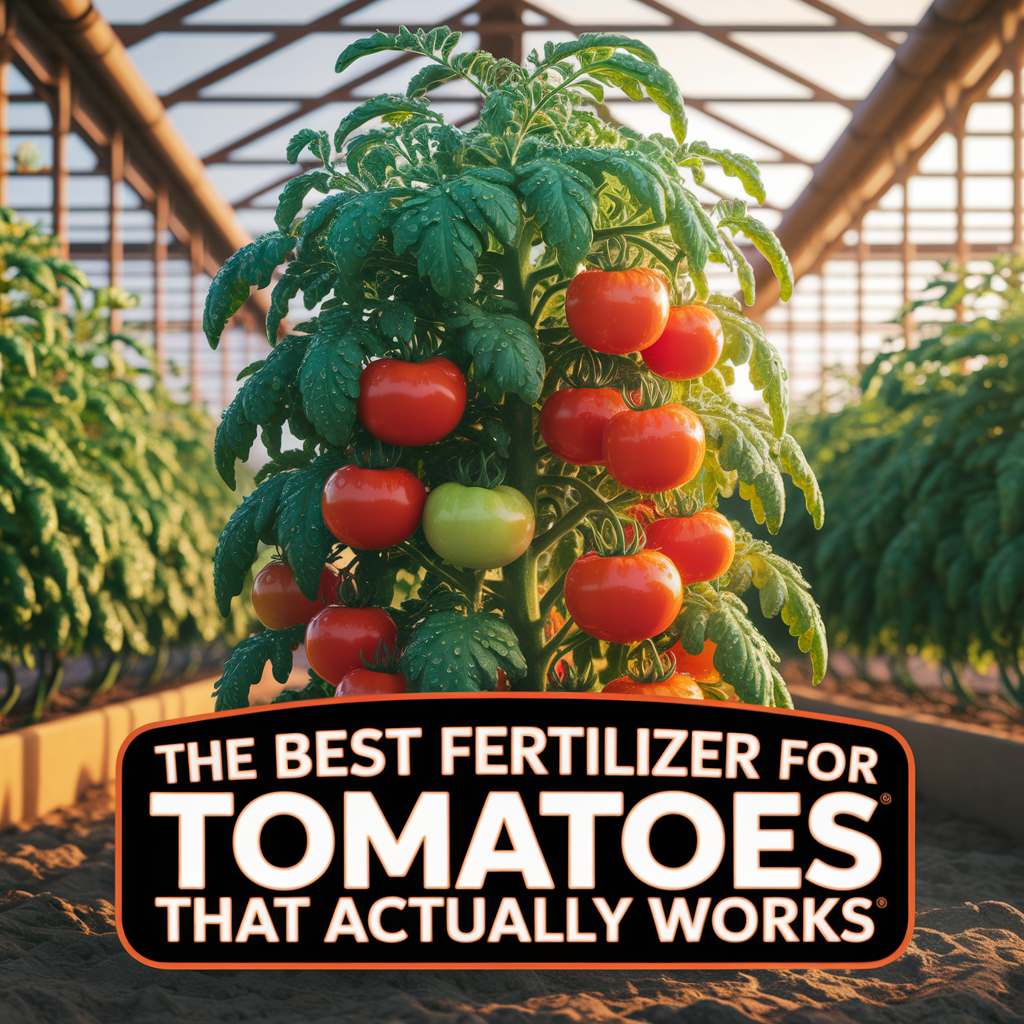
Should I Change My Soil If I Overwatered?
In some cases, yes. Especially if your soil stays soaked for days and starts to smell funky or look moldy — that’s not good. One year I had to dig up and replant a couple tomatoes because the drainage was just terrible.
If you’re growing in containers, it’s easier to swap out the soil. I always use a light, well-draining potting mix made for veggies. And I add in a bit of perlite or coarse sand to improve drainage even more.
For in-ground gardens, consider mixing in compost, peat moss, or even some fine bark mulch to loosen things up. Avoid heavy clay-based soils unless you’ve amended the heck out of them.
Bottom line? Healthy soil = fewer problems. I learned that the hard way.
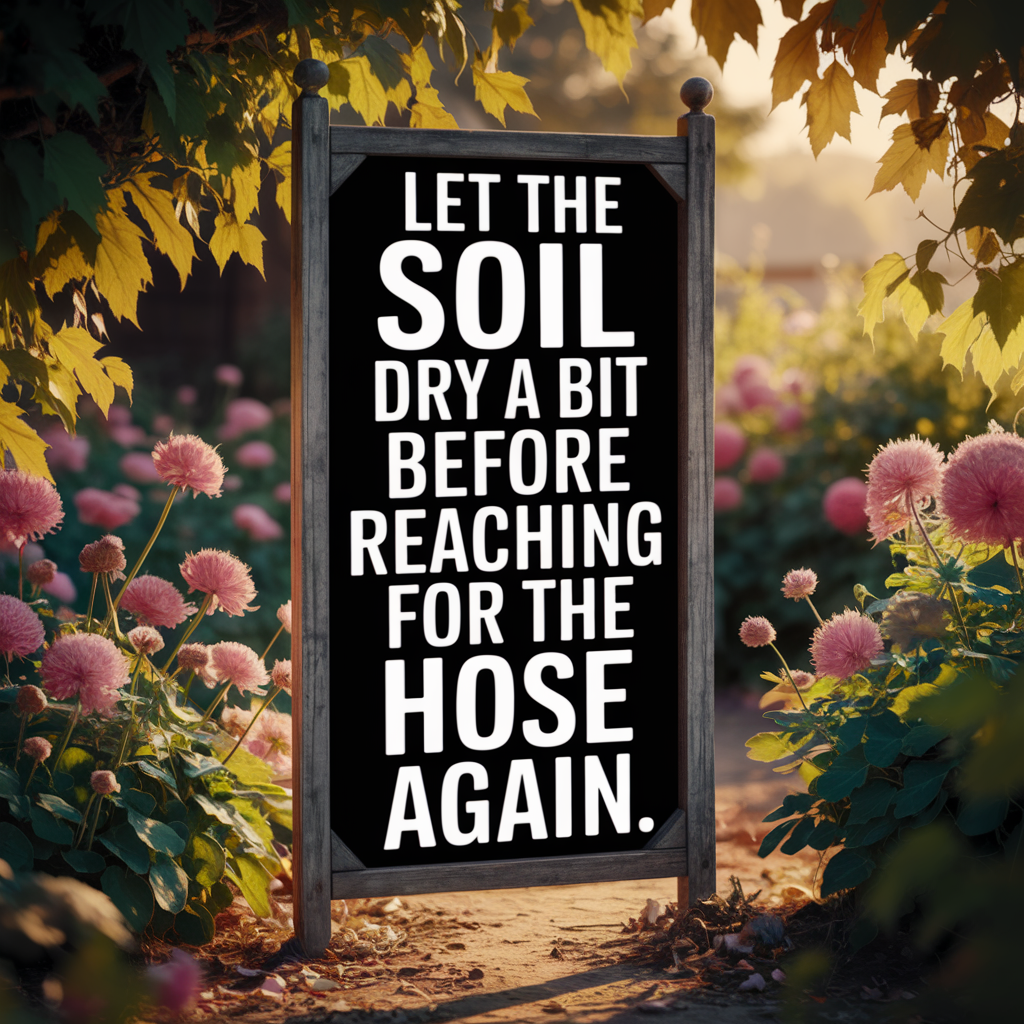
How to Water Tomato Plants the Right Way
Once I learned the hard way what overwatering tomato plants looks like, I had to shift how I handled watering altogether. Now I follow one simple rule: water deeply but less often.
I check the soil first by sticking my finger about two inches down. If it’s dry, it’s time to water. If it’s still moist? I back off. I also water early in the morning, right at the base of the plant. That helps avoid diseases and lets the leaves dry out during the day.
Another little tip? Mulch. Seriously, it helps retain just the right amount of moisture and keeps things from drying out too fast or staying soggy. And if you’re wondering what else to watch for when your plants aren’t looking their best, check out this guide on why tomato plants turn yellow.
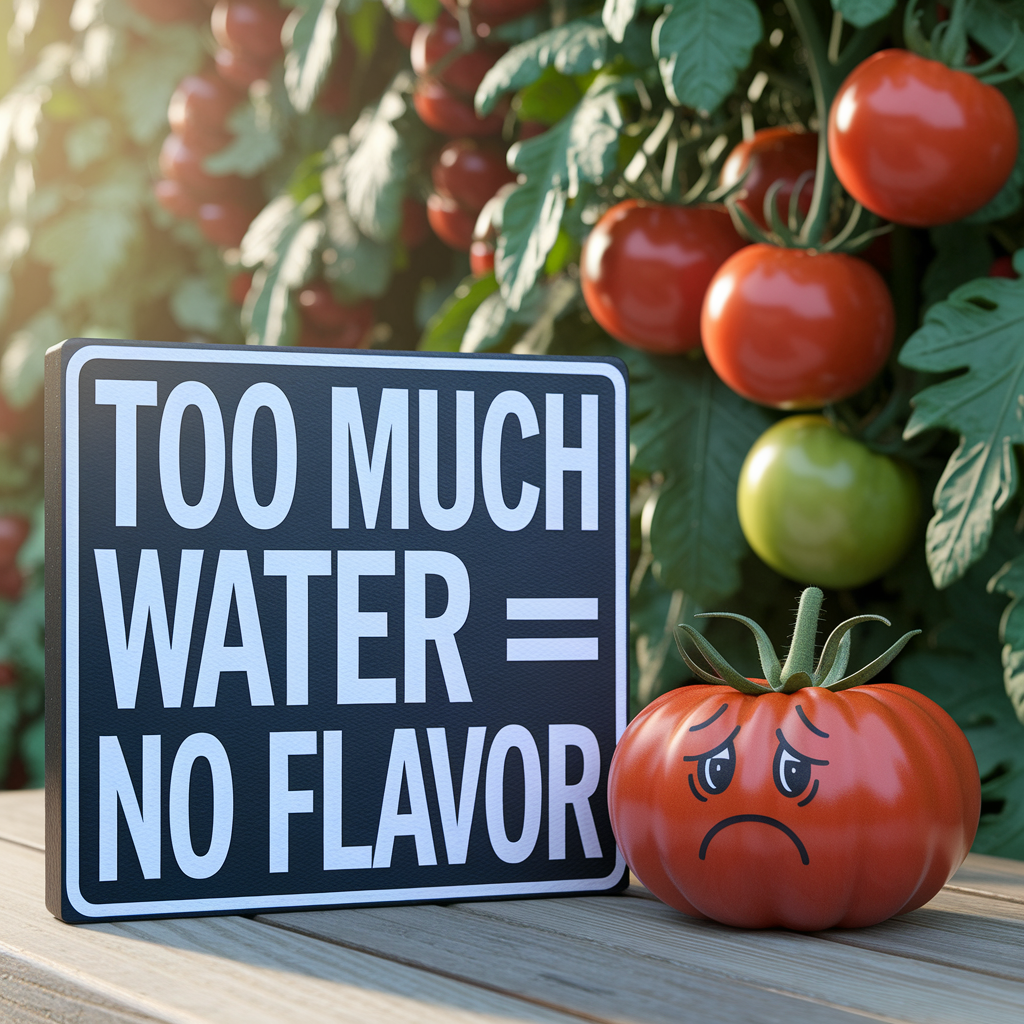
Common Questions About Overwatering Tomato Plants
Can tomato plants recover from overwatering?
Yes, if you catch it early. Stop watering, improve drainage, and remove any damaged leaves. The plant might bounce back within days.
Is wilting always a sign of overwatering?
Not always — wilting can also mean underwatering or heat stress. But if the soil is wet and the plant is wilting, you’re likely overwatering.
Should I use a moisture meter?
Totally up to you, but I personally love mine. It removes the guesswork and keeps me from “loving my plants to death.”
Can overwatering cause fruit issues?
Definitely. Tomatoes can crack or become watery and bland. Overwatering dilutes flavor and leads to fewer, lower-quality fruits.
Does container gardening make overwatering worse?
It can if your pots don’t drain well. Always choose containers with drainage holes and use a loose, well-draining potting mix.
Want to keep your plants healthy from the start? Don’t miss my guide on the best fertilizer for tomatoes, especially after recovering from overwatering.
As an Amazon Associate we earn from qualifying purchases through some links in our articles.

